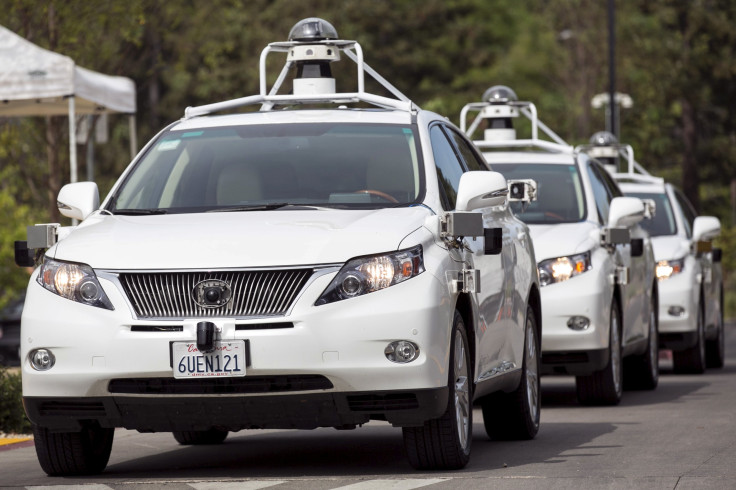Google Self-Driving Cars Could Soon Have Flypaper-Like ‘Sticky’ Hoods To Protect Pedestrians

Google prides itself on the safety record of its groundbreaking self-driving cars but as an extra precaution the company is working on a "sticky" hood that will prevent pedestrians from bouncing off the cars if hit.
Having driven over 1.5 million miles since beginning testing in 2014, Google's self-driving cars reported their first accident only last month when the search giant admitted it was at least partly responsible for an accident, which saw one of its fleet of Lexus SUVs collide with a public bus. Previously, all crashes reported involving one of Google's fleet had been blamed on driver error.
Google is keen to continue leading the way in the area of autonomous cars amid competition from traditional carmakers as well as companies like Faraday Future, Tesla and reportedly Apple. To that end, Google wants to help protect those pedestrians who may wander in front of one of its cars — by making them "stick" to the hood.
“Ideally, the adhesive coating on the front portion of the vehicle may be activated on contact and will be able to adhere to the pedestrian nearly instantaneously,” according to a patent Google was granted this week.

“This instantaneous or nearly-instantaneous action may help to constrain the movement of the pedestrian, who may be carried on the front end of the vehicle until the driver of the vehicle (or the vehicle itself in the case of an autonomous vehicle) reacts to the incident and applies the brakes,” the patent said, adding: “As such both the vehicle and pedestrian may come to a more gradual stop than if the pedestrian bounces off the vehicle.”
When describing the adhesive that would be used, Google compares it to flypaper or double-sided duct tape, adding that “it is also desirable to have the adhesive in the adhesive layer release after a short period of time to allow for the removal of the pedestrian from the vehicle.”
It is unclear when or whether Google will add this feature to its self-driving cars, with a spokeswoman for the company telling the San Jose Mercury News that Google holds “patents on a variety of ideas. Some of those ideas later mature into real products and services, some don’t.”
While other car companies have attempted to mitigate the damage caused by vehicles hitting pedestrians, including deploying exterior airbags, these measures don't help mitigate the damage cause by secondary impact when the pedestrian is propelled onto the ground or into oncoming traffic.
© Copyright IBTimes 2024. All rights reserved.












